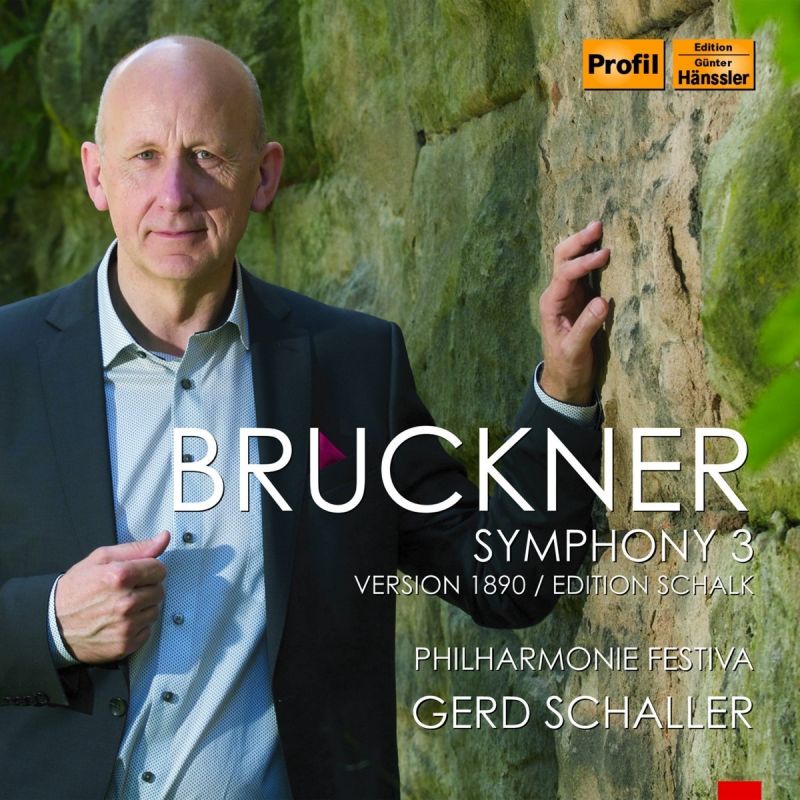BRUCKNER Symphony No 3 (Schaller)
View record and artist detailsRecord and Artist Details
Composer or Director: Anton Bruckner
Genre:
Orchestral
Label: Profil
Magazine Review Date: 07/2018
Media Format: CD or Download
Media Runtime: 57
Mastering:
DDD
Catalogue Number: CDPH18002

Tracks:
| Composition | Artist Credit |
|---|---|
| Symphony No. 3 |
Anton Bruckner, Composer
Anton Bruckner, Composer Gerd Schaller, Conductor Munich Philharmonia Festiva |
Author: Christian Hoskins
The published edition of 1890 is of dubious authenticity, however. Although Bruckner’s 1889 manuscript contains amendments in the finale made by Josef Schalk’s younger brother Franz, these are changes that the composer chose to retain as part of a thorough overhaul of the symphony. For this reason, the 1889 score of the Third Symphony is regarded as a legitimate document by Bruckner scholars and is regularly performed and recorded. The 1890 version, however, has revised dynamic and tempo markings, additional instrumental lines and a large number of slurs, none of which are attributable to Bruckner. Given the availability of more authentic options, I’m not sure what justification there is for performing the 1890 score.
Fortunately, the differences between the 1889 and 1890 scores are relatively minor in practice. Indeed, many of the modifications sound like the sort of differences normally heard in interpretations of the same work by different performers. Conversely, anyone familiar with the 1889 version might assume the unfamiliar dynamic swelling of the brass heard at 11'19" in the first movement is a feature in the 1890 score but it is in fact an element of Schaller’s performance. As it happens, such interpretative quirks are unusual with this conductor. Schaller knows how to sustain the listener’s interest while maintaining fidelity to the score, and how to encourage refined and sonorous playing from the orchestra. Sanderling’s distinguished 1963 account of the same score with the Leipzig Gewandhaus Orchestra has a degree more intensity and mystery, but the recording has a trace of distortion in climaxes. By contrast, Profil’s recording offers excellent sound, presenting the orchestra with an attractive sheen and allowing textural detail to be clearly heard despite the six-second reverberation of Ebrach Abbey.
Discover the world's largest classical music catalogue with Presto Music.

Gramophone Digital Club
- Digital Edition
- Digital Archive
- Reviews Database
- Full website access
From £8.75 / month
Subscribe
Gramophone Full Club
- Print Edition
- Digital Edition
- Digital Archive
- Reviews Database
- Full website access
From £11.00 / month
Subscribe
If you are a library, university or other organisation that would be interested in an institutional subscription to Gramophone please click here for further information.




